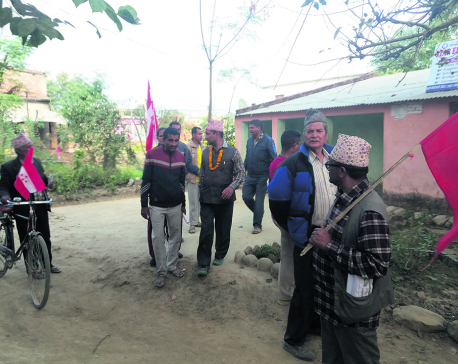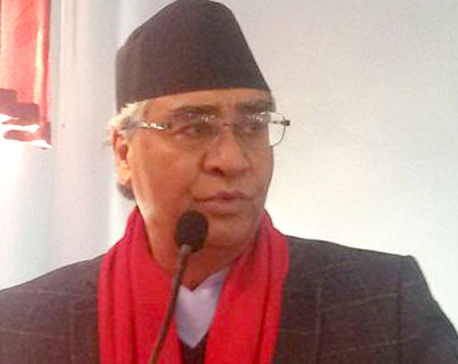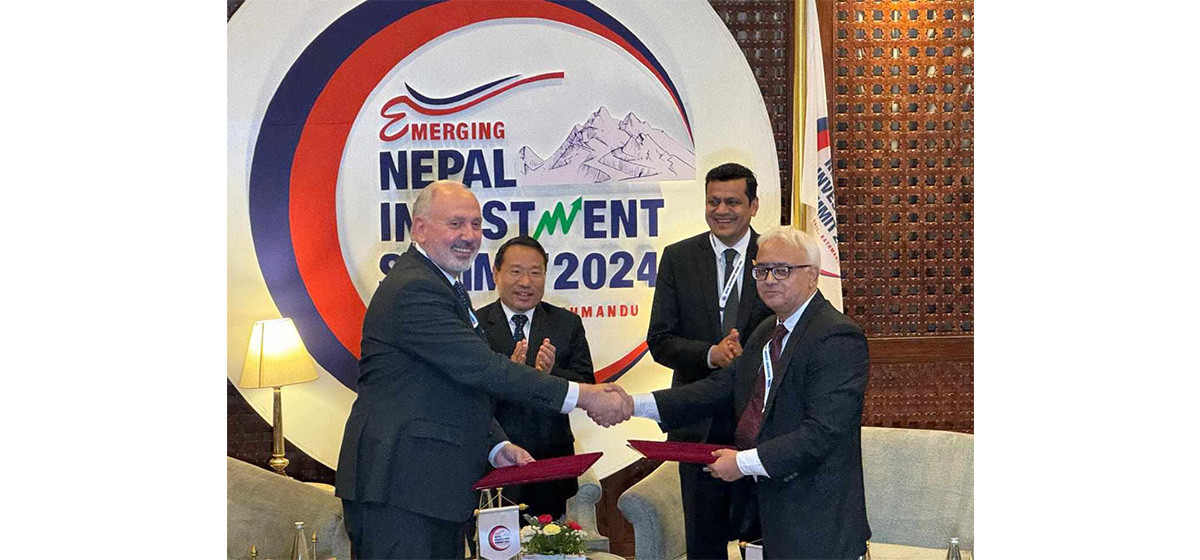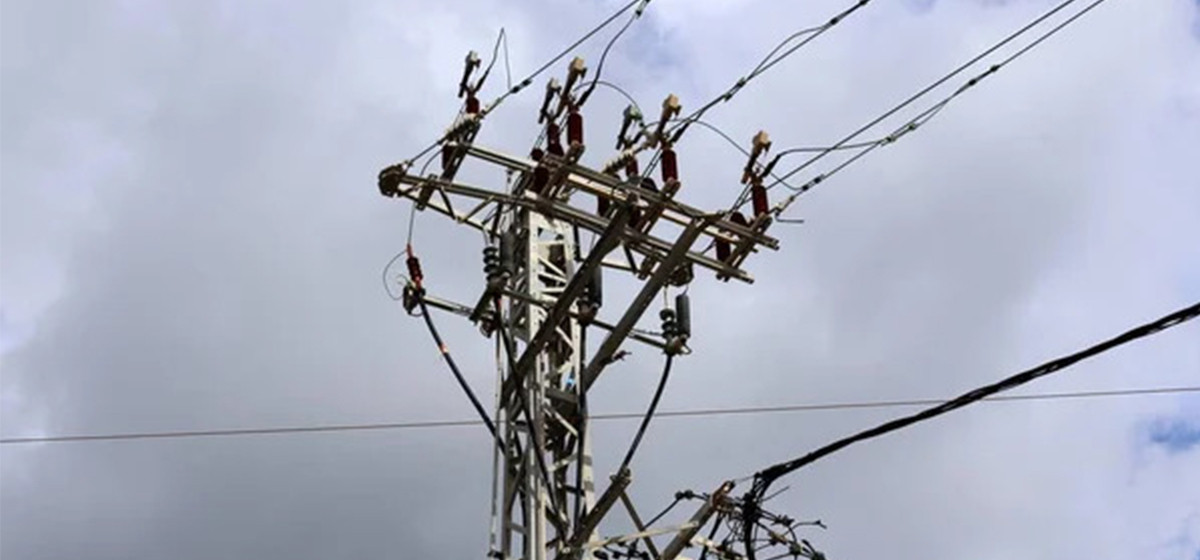
OR
Tall promises as voters care least about poll manifestoes
Published On: November 4, 2017 10:03 AM NPT By: Republica | @RepublicaNepal
KATHMANDU, Nov 3: As the dates for the upcoming parliamentary and provincial assembly polls are fast approaching, major political parties are unveiling their election manifestoes one after another. While the ruling Nepali Congress (NC) officially unveiled its manifesto earlier this week, the joint manifesto of the left alliance led by CPN-UML has also been made public, albeit unofficially.
Both the manifestoes have made a long list of promises they wish to fulfill should they get a chance to rule the country. But what draw the readers' attention in particular are the lofty promises, which economists see unfeasible. But every political party has made such promises for the polls.
For instances, the UML-led alliance has promised a rail network in Kathmandu's ring road area in five years and sail Nepali flag carriers in the Pacific and India oceans. The left alliance has also announced to generate 20,000 MW of hydropower in 10 years in the country that currently generates less than 1,000 MW.
Among other things, the alliance has promised to increase social security allowance to Rs 5,000 a month and increase per capita income to US$ 5,000 in five years, up from less than US$ 1000 at present.
The NC is no less when it comes to making tall promises to the people. The party has promised to double the size of country's GDP to US$ 50 billion, generate 300,000 to 500,000 employment opportunities each year at home and increase the per capita income to US$ 1,500 in five years.
The party has also announced to generate over 15,000 MW of electricity, build 1,000 kms of expressways, over 500 kms of railway track, and provide irrigation to over 1.8 million hectares of arable land in tarai-Madhes - all in just 10 years.
Professor of economics, Madan Dahal said the parties are seen making lofty promises that are hardly achievable if available means and resources in the country are taken into account. “These kinds of promises only make the people frustrated as the political parties fail to deliver the promises they make during the elections," he said. “It is not that political parties cannot or should not make big promises, but they should be realistic.”
If elected, the candidates will be elected for a term of five years. What is ironic, however, is the parties have made pledges for the next 20 or 50 years. “The promises should be such that they can be fulfilled within the five-year term. If promises are made for 20 or 50 years, they remain mere dreams for many of the current generation,” Dahal further said.
Analysts argue that the parties are finding it easy to make big promises as voters in general do not care much about the promises they make during the election. They do not either bother to make the leaders in power accountable for the promises they make during the polls.
Former lawmaker and political analyst Nilambar Acharya argued that it is natural on the part of the political parties to make tall promises, especially during elections. “It is like a tradition of wearing new clothes in Dashain or other big festivals. This has to be understood in the same vein," he said.
Acharya maintained that election manifestoes should not be seen as the parties' permanent policy. “Each political party makes big promises to show they are better than others to lure voters in their favor. And, this is not unnatural. It is like selling your products in the market through various publicity stunts," said Acharya.
You May Like This

Rural voters no longer believe tall poll promises
DHADING, Nov 13: Every candidate is aware that an impressive agenda is the key to win elections. So, they often reach... Read More...

Tired of tall promises, voters avoid campaigners
KOHALPUR, Dec 4: Door-to-door canvassing is widely popular among various political party candidates contesting assembly and parliamentary elections in the district.... Read More...

PM Deuba begins poll campaign to boost his poll prospects
DADELDHURA, Nov 17: Prime Minister and Nepali Congress President Sher Bahadur Deuba has begun election trails in his home constituency, Dadeldhura,... Read More...






Just In
- Nepal Investment Summit: Two organizations sign MoU for PPP cooperation
- Sita Air flight to Ramechhap returns to Kathmandu due to hydraulics issue
- Man found dead in Dhanusha
- Gold prices decreases by Rs 400 per tola
- Ilam-2 by-election: UML candidate Nembang secures over 11,000 votes
- High-voltage power supply causes damage to 60 houses
- Bajhang-1 by election: UML leads again
- Lumbini and Koshi likely to experience stormy conditions











Leave A Comment